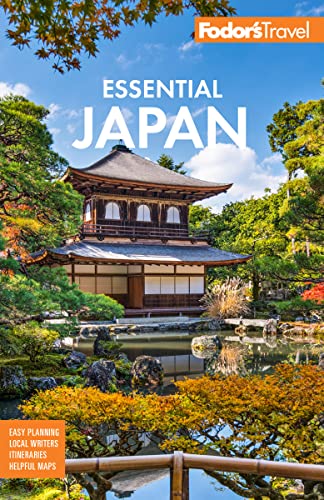Japan On the Calendar
Matsuri (festivals) are very important to the Japanese, and around 30,000 are held throughout the year. Many of them originated in folk and religious rituals and date back hundreds of years.
Matsuri take place annually at Buddhist temples and Shinto shrines, and many are associated with the changing of the seasons or for honoring the spirits of the deceased. Most are free of charge and attract thousands of visitors as well as locals.
In most cases matsuri are elaborated upon in the relevant chapters of this guide, especially when local history is involved. To find out specific matsuri dates, contact the Japan National Tourism Organization .
When national holidays fall on Sunday, they are celebrated on the following Monday. Museums and sights are often closed the days after these holidays.
Winter
January 1
New Year's Day is the "festival of festivals" for the Japanese. Some women dress in traditional kimonos, and many people visit shrines and hold family reunions. Although the day is solemn, streets are often decorated with pine twigs, plum branches, and bamboo stalks.
February
During the first half of the month, more than 300 pieces of ice sculpture, some huge, populate the Sapporo Snow Festival, bringing some 2 million people to the city to see them.
February 13–15
The Namahage Sedo Festival, in Akita City (Tohoku), enacts in public a ritual from nearby Oga of threatening "good-for-nothings": men in demon masks carrying buckets and huge knives issue dire warnings to loafers.
Spring
April 29
Showa Day. The first day of Golden Week—a medley of holidays is when many Japanese take vacations, and hotels, trains, and attractions are booked solid.
May 15
Dating back to the sixth century, the Aoi Festival, also known as the Hollyhock Festival, is the first of Kyoto's three most popular celebrations. An "imperial" procession of 300 courtiers starts from the Imperial Palace and makes its way to Shimogamo Shrine to pray for the prosperity of the city. Today's participants are local Kyotoites.
Mid-May
Another loud Tokyo blowout, the Kanda Festival is all about taking the Kanda shrine's gods out for some fresh air in their mikoshi (portable shrines)—not to mention drinking plenty of beer and having a great time on the weekend closest to May 15.
Late May
The Sanja Festival, held on the third weekend of May at Tokyo's Asakusa Jinja, is the city's biggest party. Men, often naked to the waist, carry palanquins through the streets amid revelers. Many of them bear the tattoos of the Yakuza, Japan's Mafia.
Summer
July 16–17
The Gion Festival, which dates back to the ninth century, is perhaps Kyoto's most popular festival. Twenty-nine huge floats sail along downtown streets and make their way to Yasaka Shrine to thank the gods for protection from a pestilence that once ravaged the city.
July 24–25
Osaka's Tenjin Festival is a major event, with parades of floats and nighttime fireworks and processions of 100-plus lighted vessels on the city's canals.
Late July or early August
On Miyajima near Hiroshima, the lunar calendar determines the timing of three stately barges' crossing of the bay to the island's shrine for the Kangen-sai Festival.
August
The first week's dreamlike Neputa Festival, held in the Tohoku city of Hirosaki, finds nightly processions of floats, populated with illuminated paintings of faces from mythology, through the streets.
August 3–7
The Nebuta Festival in northern Tohoku's Aomori noisily celebrates an ancient battle victory with a nighttime parade of illuminated floats.
August 5–7
At Yamagata's Hanagasa Festival, in southern Tohoku, celebrants dance through the streets in local costume among floats. Food and drink are on hand for spectators.
August 6–8
Sendai's Tanabata celebrates two legendary astrological lovers with a theatrical rendition of their tale, and city residents decorate their streets and houses with colorful paper and bamboo streamers.
August 12–15
At Tokushima’s Awa Odori festival, streets fill with local residents performing traditional Obon dances. The largest dance festival in Japan, things start off elegant but as the night goes on and drinks get downed, progress to enthusiastic if unpolished street dancing all over the city.
August 13–16
During the Obon Festival, a time of Buddhist ceremonies in honor of ancestors, many people take off the entire week to travel to their hometowns—it's best to avoid travel on these days.
August 16
For the Daimonji Gozan Okuribi, huge bonfires in the shape of kanji characters illuminate five of the mountains that surround Kyoto. The most famous is the Dai, meaning “big,” on the side of Mt. Daimonji in Higashiyama (Kyoto's eastern district). Dress in a cool yukata (cotton robe) and walk down to the banks of the Kamo-gawa to view this spectacular summer sight, or catch all five fires from the rooftop of your hotel downtown or a spot in Funaoka-yama or Yoshida-yama parks. There are Bon dances to honor the departed as well as the floating of lanterns in Arashiyama (the western district).
Autumn
October 22
Kyoto's Jidai Festival, the Festival of Eras, features a colorful costume procession of fashions from the 8th through 19th centuries. The procession begins at the Imperial Palace and winds up at Heian Shrine. More than 2,000 Kyotoites voluntarily participate in this festival, which dates back to 1895.
For the Kurama Fire Festival, at Kurama Shrine, there is a roaring bonfire and a rowdy portable shrine procession that makes its way through the narrow streets of the small village in the northern suburbs of Kyoto. If you catch a spark, it is believed to bring good luck.
Winter
December 23
The Emperor's Birthday. The Imperial Palace in Tokyo, which is usually off-limits to the public, opens its gates on this day. The only other day the public can enter the grounds is January 2.
Late December
City dwellers migrate to the countryside en masse for the New Year celebrations. Travel is not recommended.




